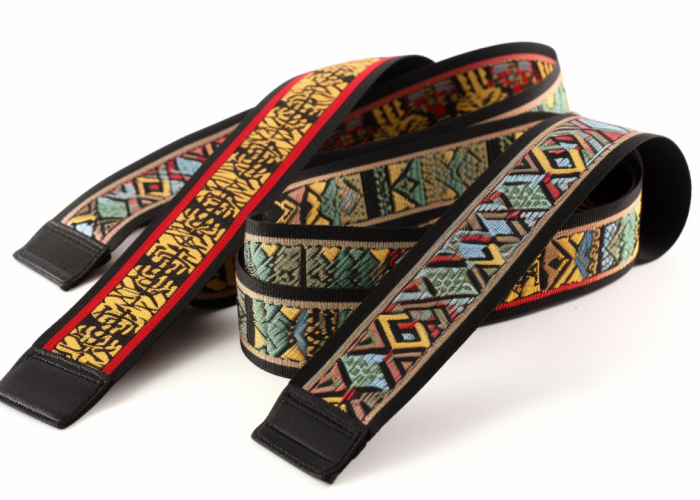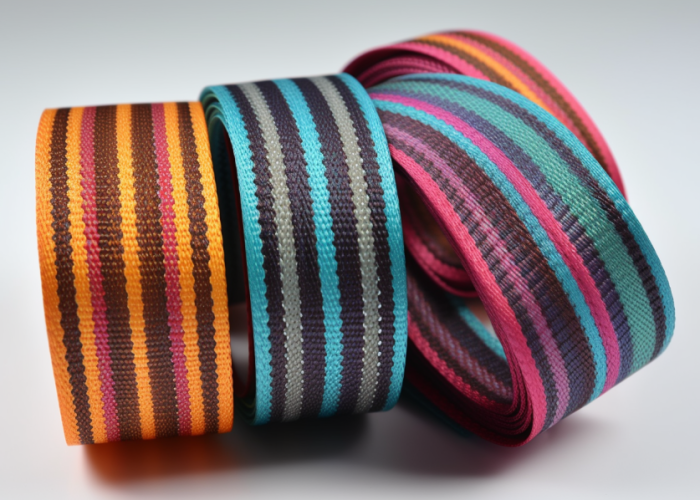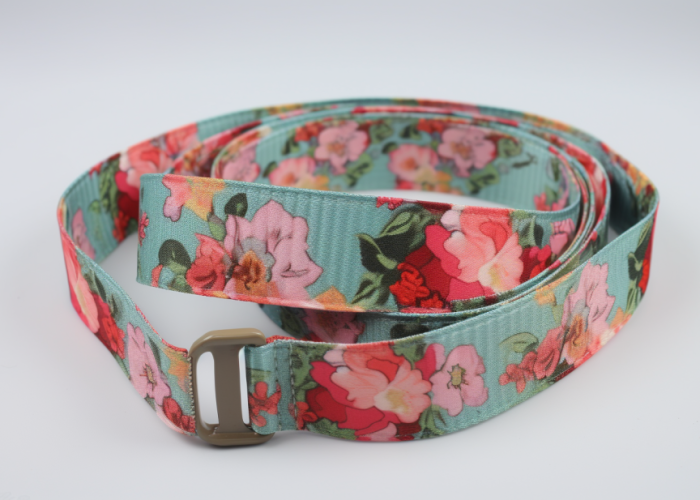As a custom webbing manufacturer, we regularly help bag designers and product developers solve one of the most frustrating performance issues: strap slippage that compromises product functionality and user experience. Through years of engineering tailor-made webbing solutions, we’ve identified that most strap movement problems stem from inadequate material specifications rather than design flaws, and these issues are entirely preventable with the right webbing selection and surface treatments.
To prevent bag strap movement, use high-friction webbing with coatings like PVC, TPR, or silicone strips. These treatments increase grip by 2–3× compared to standard webbing, keeping straps securely in place under load and motion.
Discover engineering tips and specs to prevent strap slippage. Learn how custom webbing solves movement issues across various bag applications.


Webbing manufacturing expert with 15+ years of experience helping product developers build high-performance straps for industrial, medical, and outdoor use.
Bag strap movement occurs when friction between webbing materials and contact surfaces is insufficient to resist dynamic forces during use. The primary engineering factors include low material friction coefficients (typically 0.4-0.8 for standard webbing), smooth textile surface properties, vibration effects during movement, and uneven weight distribution creating shifting loads.
Key factors that cause strap slippage:
Standard webbing demonstrates friction coefficients of 0.6-0.8 against typical bag materials, while dynamic forces can reduce effective grip by 30-40%. Smooth weave patterns create slip conditions under loads as low as 5-10 pounds, with concentrated pressure points acting as pivot areas where straps migrate during use.
From our manufacturing experience, most failures occur in lightweight bags where designers assume basic webbing will suffice. Once initial slippage begins, continued movement accelerates the problem—we’ve observed this pattern across handbags, lightweight backpacks, and messenger bags using standard specifications.
Industry testing standards like ASTM D6797 establish baseline performance requirements. Friction coefficients below 0.8 indicate inadequate grip for dynamic conditions, while values above 1.2 provide reliable control under normal use.
Design Takeaway: Specify webbing materials with friction coefficients above 1.0 and consider surface texturing to address the root cause. Our custom webbing manufacturing can engineer material properties specifically for your load requirements and use patterns.
PVC-coated webbing delivers superior grip performance with friction coefficients of 1.66-2.08 compared to 0.8 for standard uncoated materials, representing a 200-250% improvement in slip resistance. The 0.2-1.5mm PVC coating layer creates a textured surface that maintains consistent grip under dynamic loading conditions and provides reliable performance for bags carrying 15-50 pound loads.
Key performance advantages of PVC coating:
Performance testing shows PVC-coated webbing maintains consistent grip levels across temperature ranges from -20°F to 140°F, while standard webbing can lose up to 40% grip effectiveness in wet conditions. The coating creates micro-texture patterns that increase surface contact area by 60-80%, providing mechanical grip that doesn’t rely solely on material friction properties.
From our manufacturing perspective, PVC coating applications work best for outdoor bags, tactical gear, and heavy-duty applications where strap security is critical. However, the coating adds thickness (0.2-1.5mm) and weight (15-25% increase), requiring design accommodation. Cost considerations include material pricing at $5-$25 per meter compared to $2-$8 for standard webbing.
The coating process requires specialized equipment and quality control to ensure uniform application and adhesion. Poor coating application can create weak points where delamination occurs under stress, making manufacturing expertise critical for reliable performance.
Design Takeaway: Specify PVC-coated webbing for applications requiring friction coefficients above 1.5 or load capacities exceeding 25 pounds. Our custom coating processes can optimize thickness and texture patterns for your specific grip and durability requirements.

Silicone strips effectively prevent strap slippage by creating micro-vacuum sealing that increases friction by 300% compared to standard textile surfaces. Dual-strip configurations using 3x5mm silicone pads provide reliable grip for lightweight applications up to 15 pounds, with reusability spanning 5-50 applications before adhesive degradation.
Silicone strip performance characteristics:
Engineering analysis shows silicone strips work through dual mechanisms: increased surface friction and micro-vacuum effects created by the flexible material conforming to contact surfaces. The 3x5mm pad dimensions provide optimal contact area without excessive bulk, while the silicone durometer of 40-60 Shore A offers the right balance of grip and flexibility.
From our webbing manufacturing experience, silicone strip applications excel in handbags, lightweight backpacks, and camera straps where loads remain under 15 pounds. The strips perform best on smooth surfaces like nylon linings or synthetic materials, but effectiveness decreases on textured fabrics or heavily worn surfaces. Installation requires clean, dry surfaces for proper adhesion.
Cost analysis shows silicone strips at $2-$20 per application offer economical solutions for lightweight applications, but limited reusability makes them less cost-effective than permanent webbing treatments for high-use products. The strips also add 1-2mm thickness to strap assemblies.
Design Takeaway: Specify silicone strips for lightweight applications under 15 pounds where removability is desired. For permanent solutions or higher loads, consider PVC-coated webbing or TPR surface treatments integrated during our custom manufacturing process.
TPR (Thermoplastic Rubber) coatings increase webbing grip by 40-60% through thermoplastic rubber applications that enhance surface texture while maintaining flexibility. This coating technology provides improved friction performance with thinner applications (0.1-0.8mm) compared to PVC coatings, making it ideal for moderate grip enhancement without significant weight penalties.
TPR coating performance benefits:
Engineering analysis shows TPR coatings work through polymer chain integration with webbing fibers, creating a semi-permanent surface modification rather than an overlay coating. The thermoplastic properties allow the coating to flex with webbing movement without cracking or delamination, while the rubber component provides enhanced grip characteristics across temperature ranges.
From our manufacturing experience, TPR coatings excel in applications requiring moderate grip enhancement without significant weight or thickness penalties. The coating process integrates well with polyester and nylon webbing production, allowing for continuous application during weaving. However, TPR coatings provide moderate performance gains compared to PVC’s dramatic improvement—making them ideal for applications where PVC would be overkill.
Quality control requires precise temperature and application rate management during the coating process. Inconsistent application can create grip variations across webbing length, while excessive coating thickness reduces flexibility benefits. The coating adds approximately 8-15% to material costs compared to uncoated webbing.
Design Takeaway: Specify TPR coatings when you need moderate grip improvement (40-60% increase) without the bulk of PVC coating. Our custom TPR application process can optimize coating density and texture patterns for your specific flexibility and grip balance requirements.
Neoprene shoulder pads prevent strap sliding by dispersing weight and providing natural grip against clothing and skin. 3-8mm thick pads with ballistic nylon backing offer optimal anti-slip performance for loads ranging from 10-50 pounds while maintaining comfort and strap adjustability.
Shoulder protection anti-slip features:
Performance testing demonstrates that neoprene’s closed-cell structure maintains consistent grip across temperature ranges while providing cushioning that prevents strap cutting under heavy loads. The ballistic nylon backing prevents pad compression that would reduce contact area and grip effectiveness, maintaining performance across 10,000+ load cycles.
From our webbing manufacturing perspective, shoulder protection integration requires careful consideration of attachment methods and strap compatibility. Sewn-on pads provide permanent solutions but limit adjustability, while removable designs offer versatility but may shift during use. MOLLE-based designs allow modular integration with tactical and outdoor gear systems while maintaining anti-slip properties.
Cost analysis shows quality shoulder protection at $8-$35 per pair represents significant value for preventing strap slippage complaints and improving user comfort. The investment typically pays for itself through reduced warranty claims and improved customer satisfaction, particularly for bags carrying 15+ pound loads regularly.
Design Takeaway: Integrate neoprene shoulder pads for bags designed to carry 15+ pounds regularly, specifying 5-8mm thickness for heavy loads and 3-5mm for lightweight comfort. Our custom webbing solutions can accommodate various attachment methods and pad integration requirements.

Choose strap solutions by matching friction requirements to load capacity, with standard webbing for under 10 lbs, PVC-coated webbing for 15-50 lbs, and specialized treatments for specific applications. The selection process involves evaluating load requirements, environmental conditions, and cost constraints to determine optimal webbing specifications.
Strap solution selection criteria:
Engineering evaluation begins with load analysis across normal and peak use conditions. Loads under 10 pounds perform well with standard webbing (friction coefficient 0.6-0.8), while 15-50 pound applications require PVC coating (1.66-2.08 coefficient) or TPR treatments. Applications exceeding 50 pounds need comprehensive analysis including safety factors.
From our manufacturing consultation experience, most design problems stem from inadequate initial specification rather than material limitations. Cost-performance optimization often reveals that moderate upgrades (TPR coating vs PVC) provide 80% of benefits at 40% of premium costs. Environmental factors like UV exposure or moisture significantly impact material selection requirements.
Industry best practices recommend safety factors of 3:1 for critical applications and 2:1 for general use, accounting for material degradation over product lifetime. Testing should include cyclic loading and environmental exposure to validate real-world performance.
Design Takeaway: Start with load analysis and environmental requirements, then balance performance needs against cost constraints. Our custom webbing manufacturing can optimize material properties and surface treatments to meet your exact specifications while maintaining cost-effectiveness.
Effective strap movement prevention requires matching webbing material properties to specific load and environmental requirements, with solutions ranging from TPR coatings for moderate applications to PVC treatments for heavy-duty use. PVC-coated webbing provides the most reliable performance for demanding applications requiring friction coefficients above 1.5. Contact us to explore manufacturing solutions tailored to your bag strap requirements.
TPR coatings maintain 40-60% grip improvement throughout normal product lifecycle with proper application. The coating integrates with webbing fibers rather than forming surface layers, providing durability comparable to the base webbing material.
PVC-coated webbing costs $5-$25 per meter compared to $2-$8 for standard webbing. The 200-400% cost increase delivers 200-250% friction improvement, making it cost-effective for applications requiring enhanced grip performance.
Silicone strips effectively handle loads up to 15 pounds with 3x friction increase over standard materials. For applications exceeding 15 pounds, specify PVC-coated webbing or TPR treatments for reliable long-term performance.
Custom anti-slip webbing orders depend on treatment type and specifications. Contact us with your specific requirements for accurate minimum quantities, lead times, and pricing for PVC coating, TPR treatment, or specialized surface modifications.
Most anti-slip treatments require integration during manufacturing for optimal performance and durability. Retrofit solutions like silicone strips work for lightweight applications, but permanent treatments need specification during initial webbing production.
Specify friction coefficients above 1.0 for reliable strap control, with 1.5+ recommended for heavy-duty applications. Standard webbing typically provides 0.6-0.8, while PVC-coated webbing achieves 1.66-2.08 for superior grip performance.